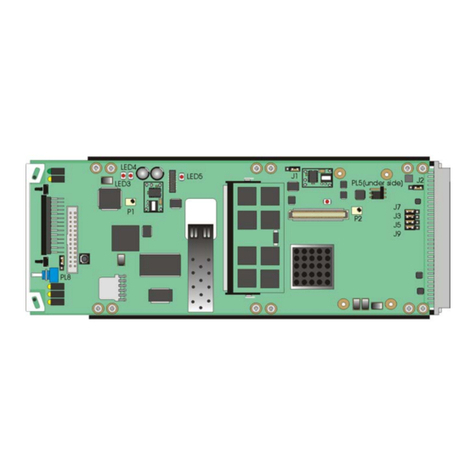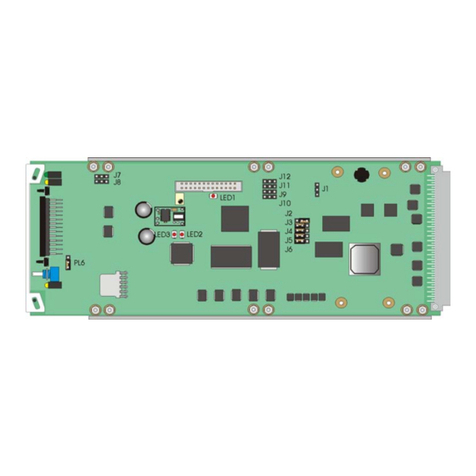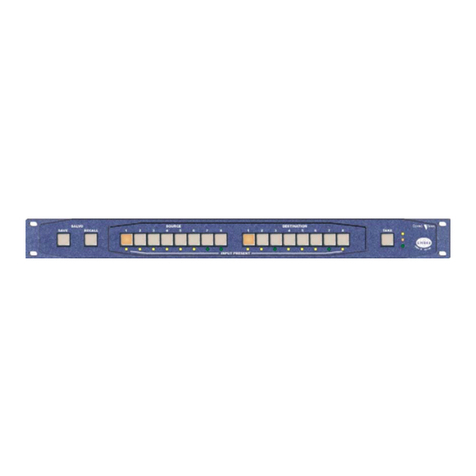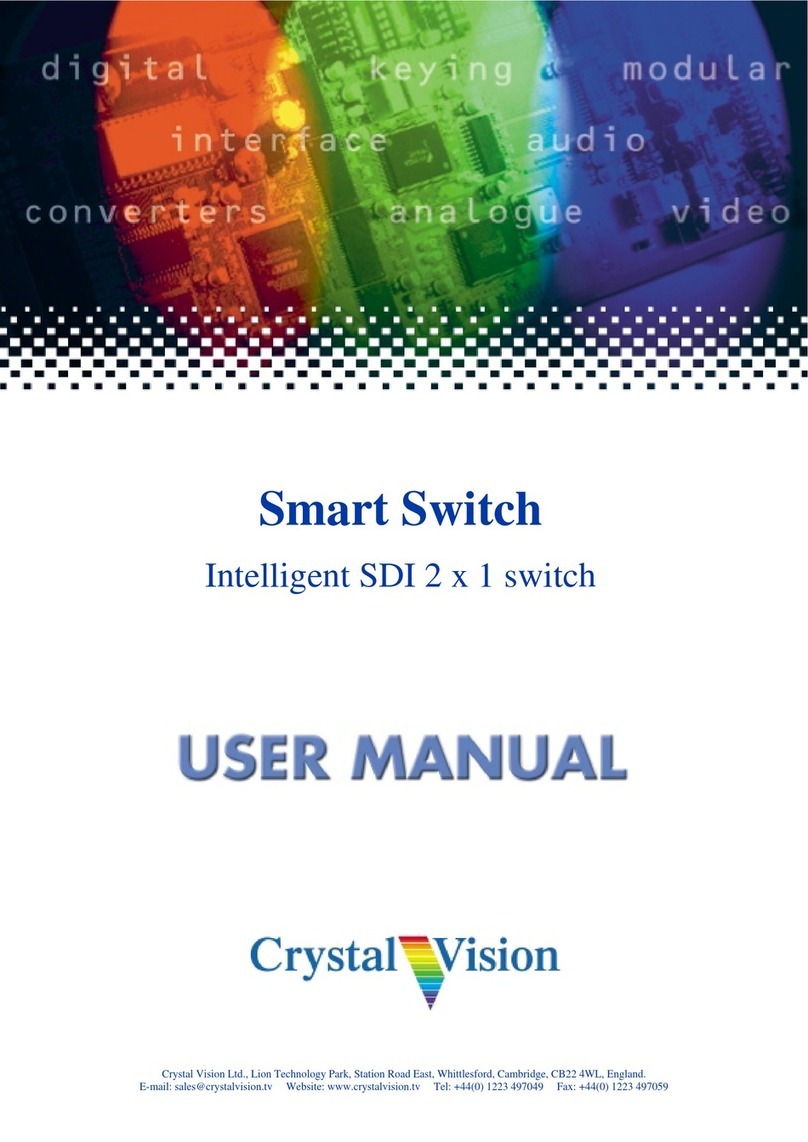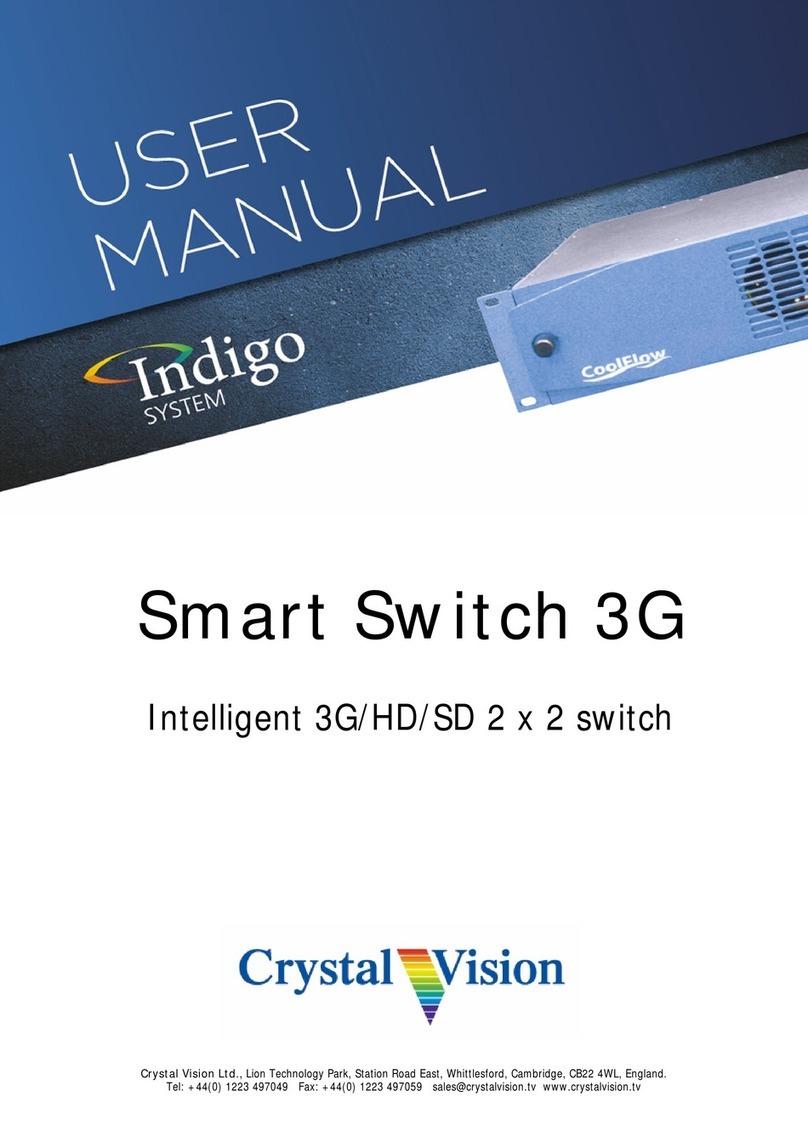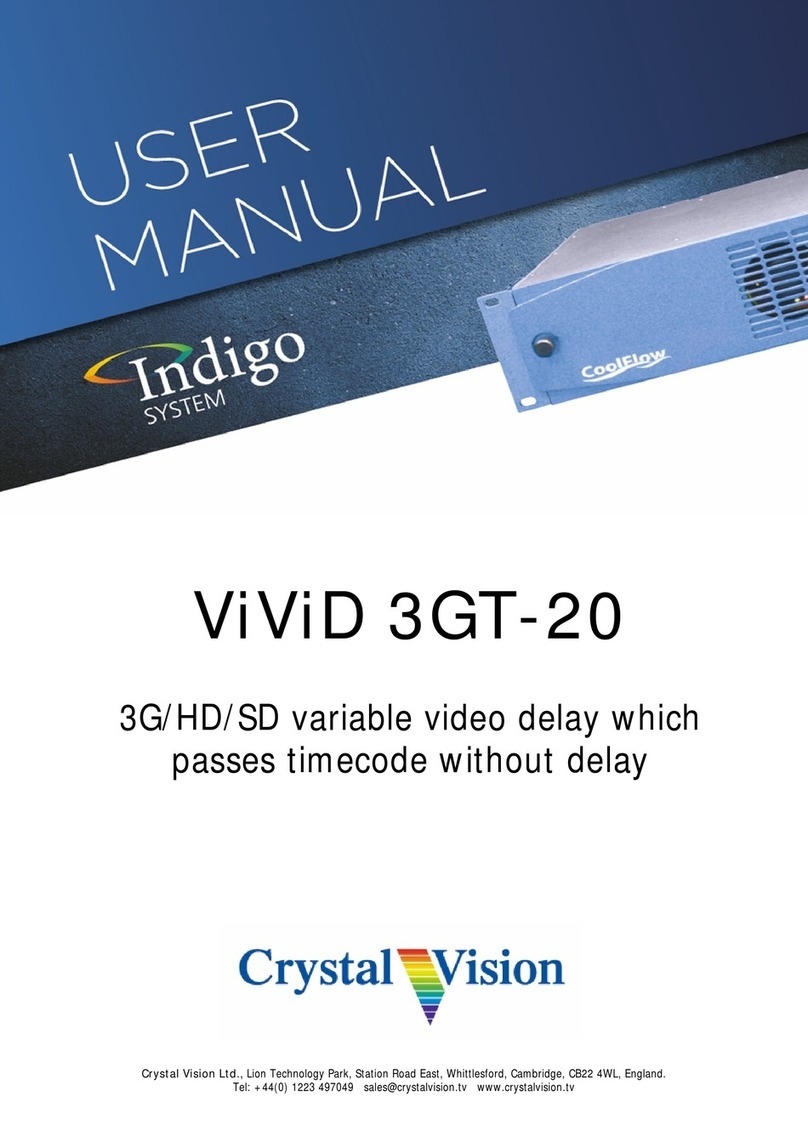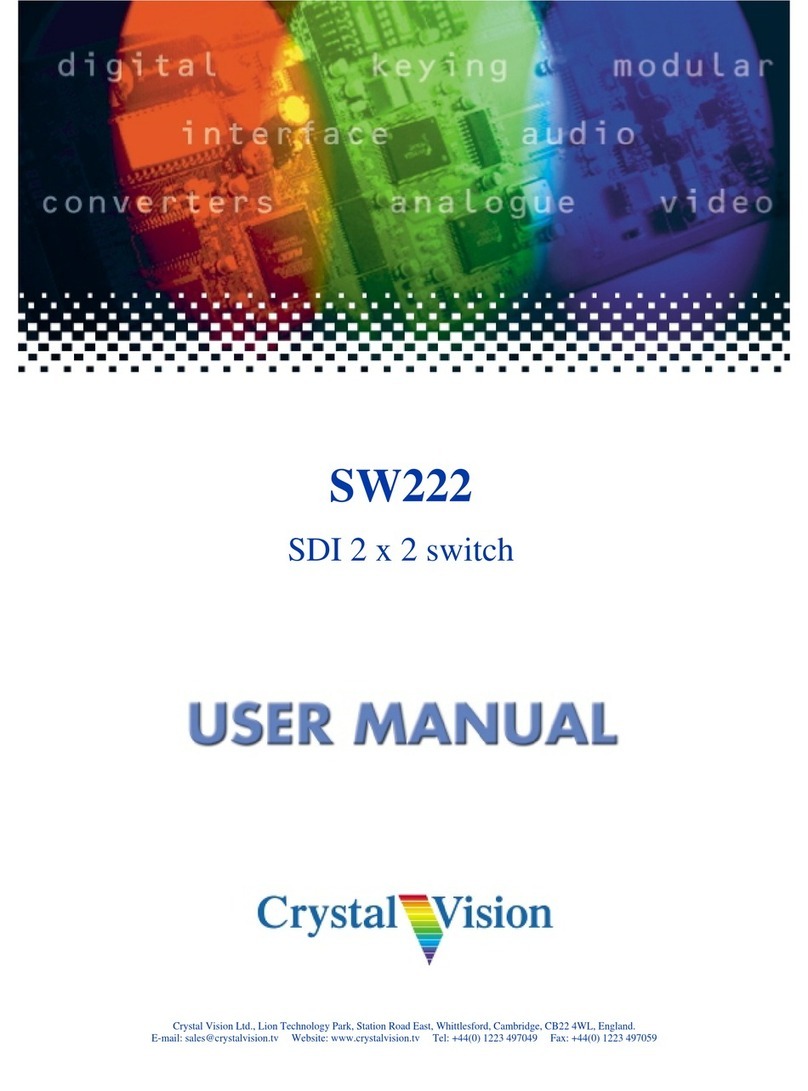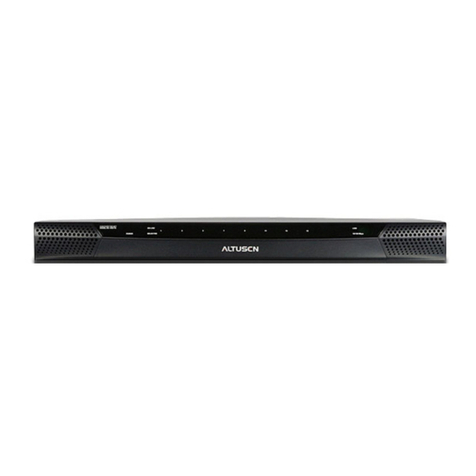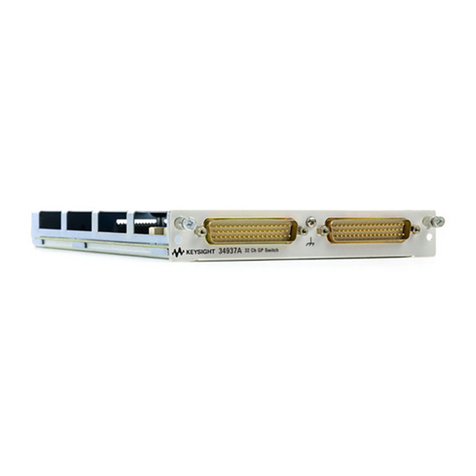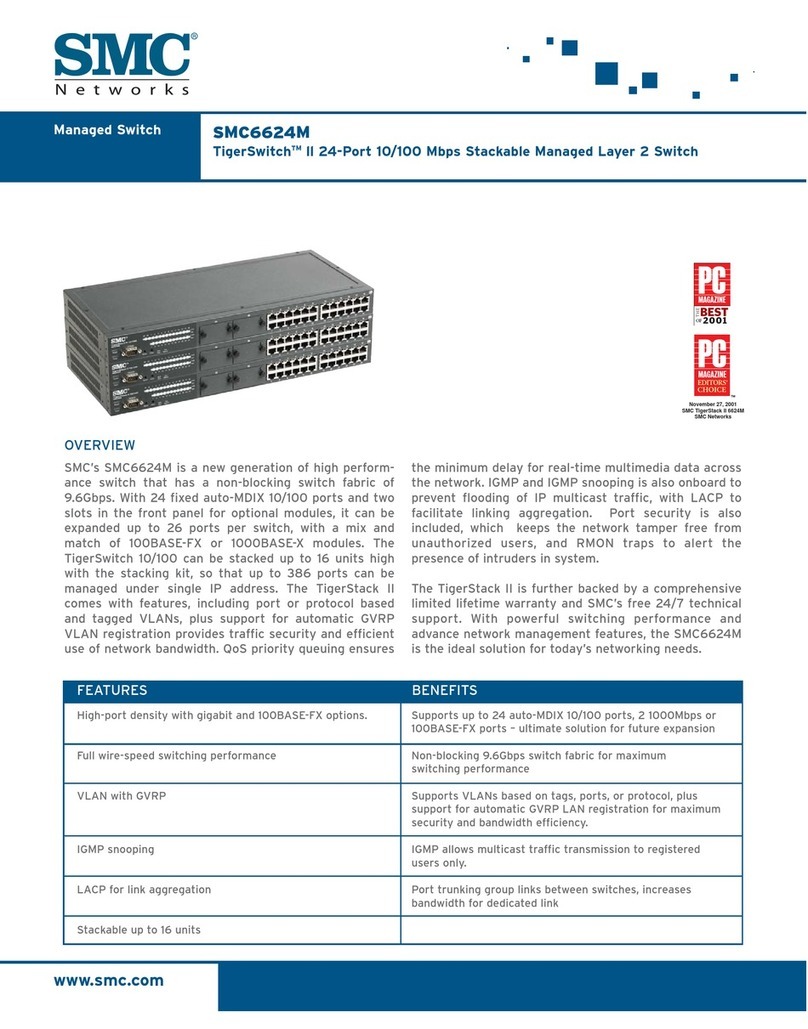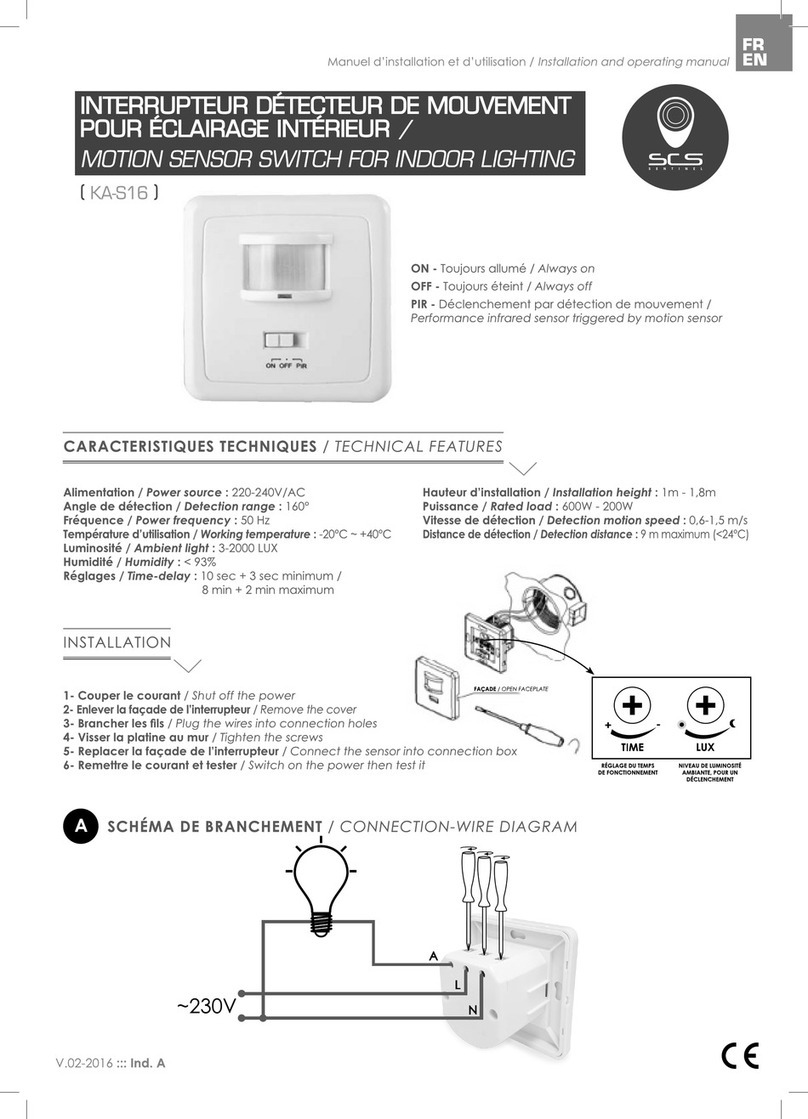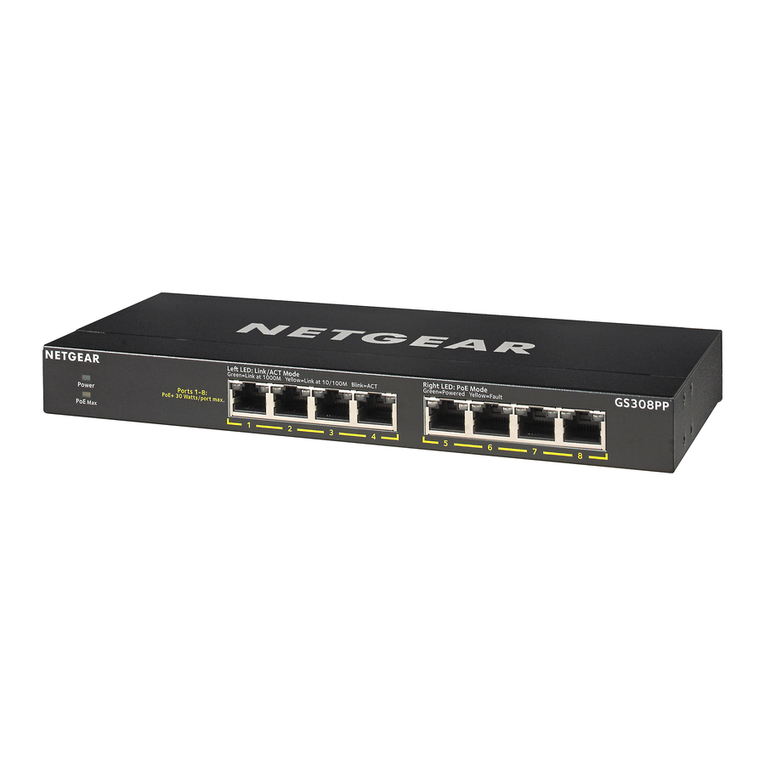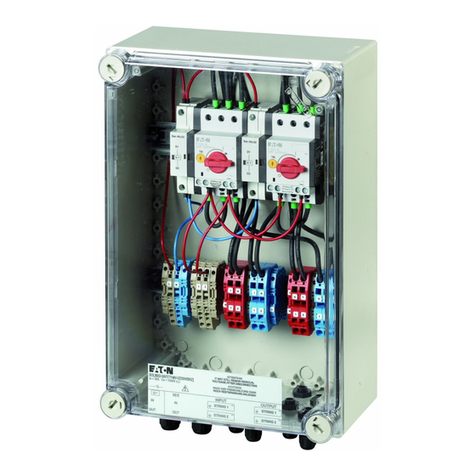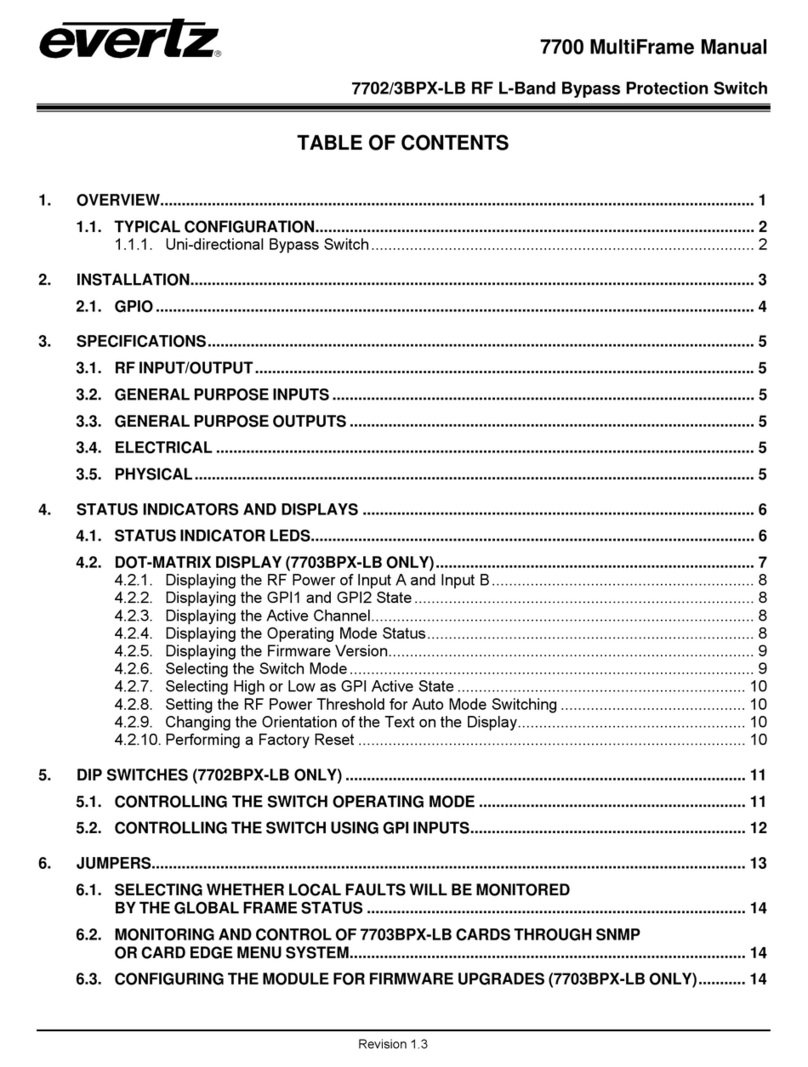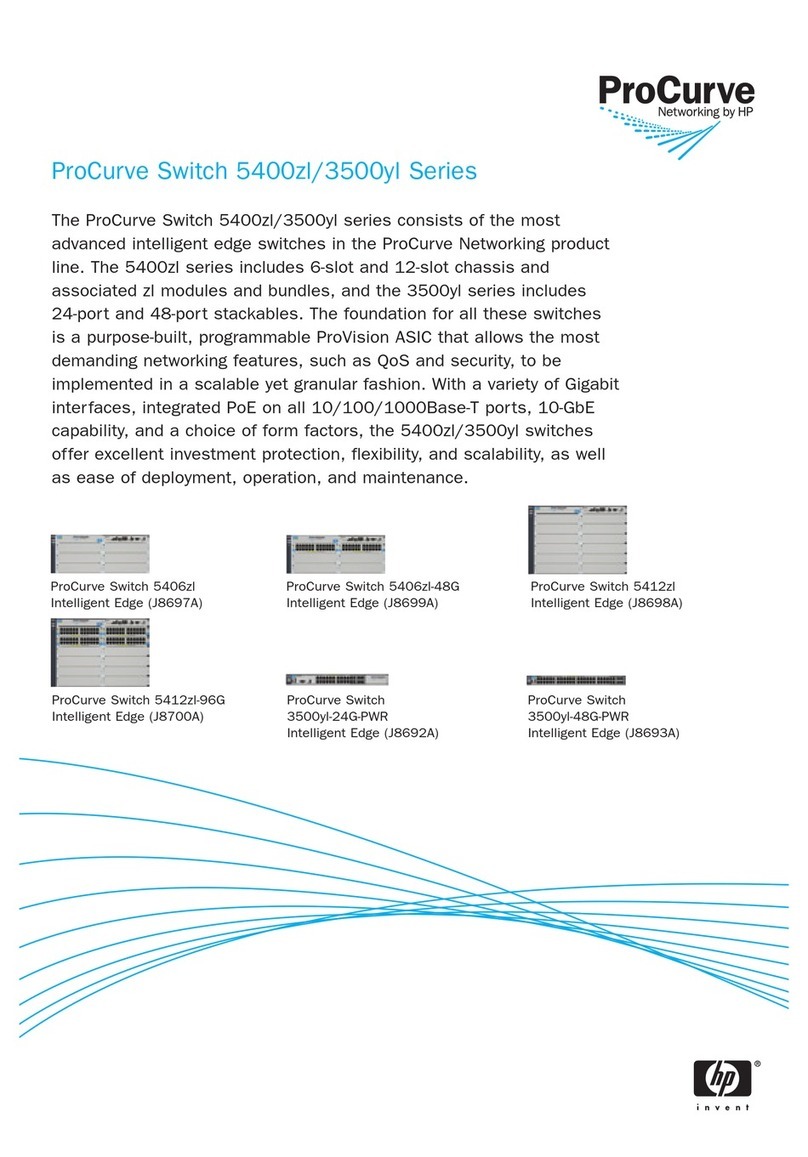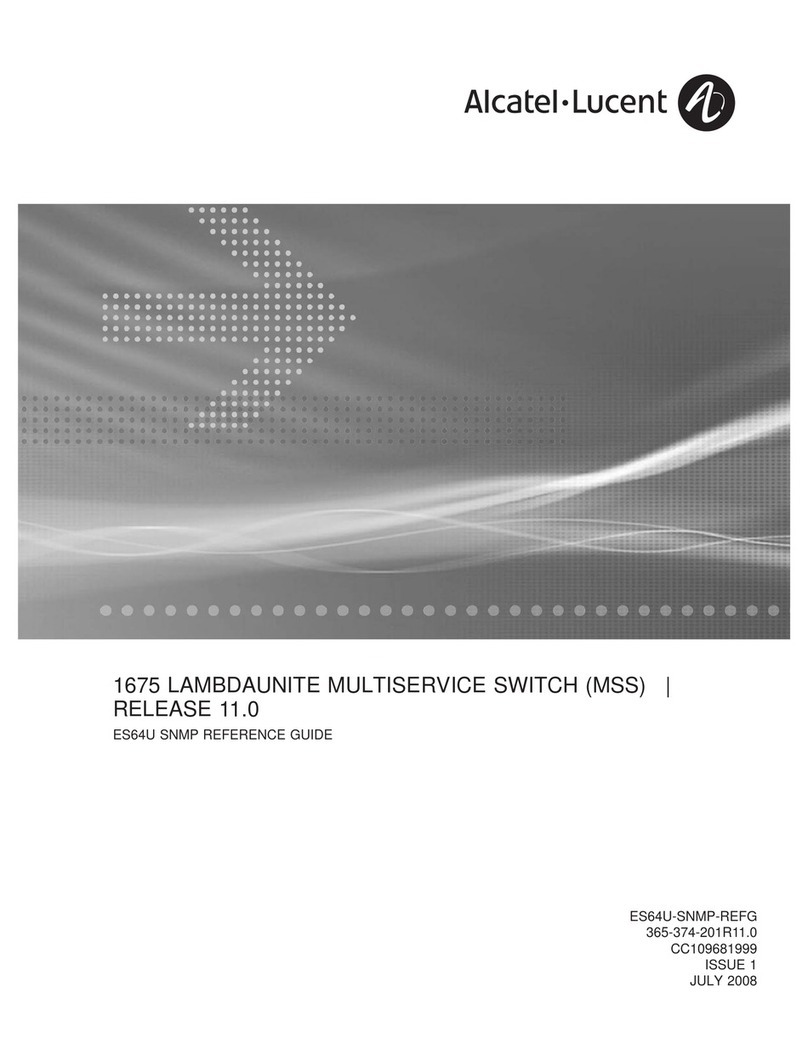
Crystal Vision Introduction
1Introduction
ViViD 3G is a range of four 3Gb/s-compatible variable video delays. The maximum delays
available are ten seconds for 3Gb/s, 20 seconds for HD and 110 seconds for SD. Delays are
adjustable in seconds,frames, lines and pixels for precise matching of system delays. ViViD
versions 3GS and 3GS-20 include – in addition to the delay line – a frame synchroniser to
lock the output video to station reference.
The main features are as follows:
•Use with any source – works with 3Gb/s, HD and SD
•Supports the following video standards: 625, 525, 720p50, 720p59.94, 1080i50,
1080i59.94, 1080p50, 1080p59.94, 1080psf23.98, 1080psf24.
•Optimise the video: video proc-amp allows adjustment of video gain, black level
and independent YUV gains. ViViD 3GS and 3GS-20 also feature a full-frame
synchroniser that re-times the video to match an external reference.
•Multiple video outputs – Four delayed outputs save the need for an additional DA.
•Control of ViViD 3G is most easily achieved with VisionWeb PC software but also
by an active front panel on the frame, a remote panel and SNMP. Board edge
control was also available prior to 2019.
•Optical connectivity – send signal beyond the local equipment bay with the fibre
input and output options.
•GPI control – 16 presets allow different delay values to be assigned then recalled
automatically by GPI.
•HANC and VANC blanking option.
•EDH insertion.
•Supports rear module connectors: RM41, RM57, RM67.
•Compatible with Crystal Vision standard frames available in 2U, 1U and desk top
box.
•Passes all timecode, AFD, subtitling information, Dolby E metadata and embedded
audio.
•Freeze output –Force output to freeze or produce black, blue or bars manually, or
automatically if input video lost.
•GPI Output Alarms – Two output alarms if input video is missing, black or frozen,
or (ViViD 3GS/3GS-20 only) reference is missing.
ViViD 3G User Manual R1.4 419 January 2021




















